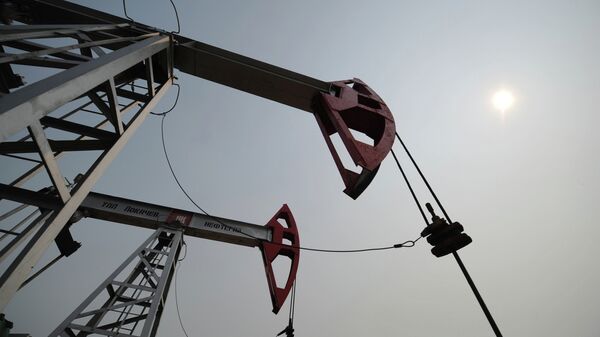Kristian Rouz – Oil prices hit their new two-year high as Russia and OPEC signaled that oil production caps could be extended through the end of 2018. The ongoing acceleration in global economic growth supports the demand for fossil fuels, whilst sustainable growth in mainland China has boosted demand for other commodities in recent weeks.
Less than a week before the OPEC negotiations kick off in Vienna, Russia expressed its willingness to support oil production caps. This means that the upcoming meeting of major global oil producers will focus largely on policy and ways to support economic growth in the current low oil price environment.
It is still uncertain how long the oil production cuts will be extended for. However, market consensus expectations agree that oil output caps will be in effect till late 2018.
“We see that 50 percent of oil stockpiles have been removed, the oil price has reached its balance,” Russia’s Energy Minister Alexander Novak said.
The current output caps are in effect through to March 2018. Despite the rise of shale oil output in North America, regulatory hurdles and obstructive partisan politics in Washington have helped support global oil prices – while US oil exports have risen substantially this year.
READ MORE: Putin Personally Made Decision to Cut Russia’s Oil Production – Spokesman
“The goal to re-balance the market hasn’t been met in full yet, so everyone is in favor of extensions to reach final goals, Russia also supports these proposals,” Novak said. “Different options are considered now, we will discuss details at the November 30 meeting.”
This reflects Russia’s rising influence on international energy markets, as OPEC leaders alone couldn’t have coordinated oil cuts deep enough to offset the negative effects on oil prices stemming from the increasing North American supply.
The negotiations between Russia and OPEC are still underway, and the deal hasn’t yet been finalized, sources say, as Russia and Saudi Arabia haven’t yet figured out the new “framework” of the looming agreement.
READ MORE: Russia's Oil and Gas Revenue to Make Up Only 1/3 of All Budget Income — Putin
In late 2016, Russia’s oil output hit its 30-year high before cutting its supply. Its production currently stands at some 11 million bpd.
The Saudis, however, are not entirely happy about the agreement, and the overall situation where they have to cut their output. Saudi Arabia’s budget and entire fiscal policy are heavily reliant on oil, much more so than Russia’s, or any other advanced economy’s for that matter.


